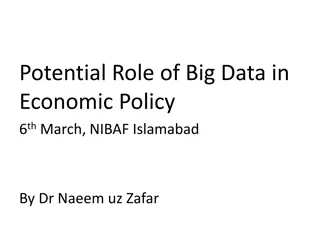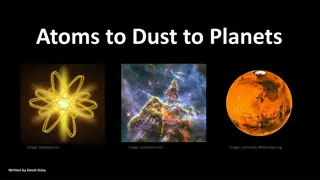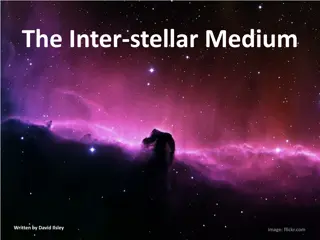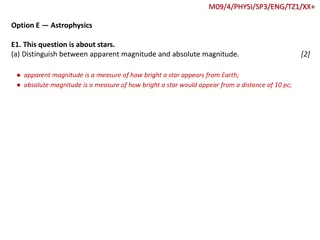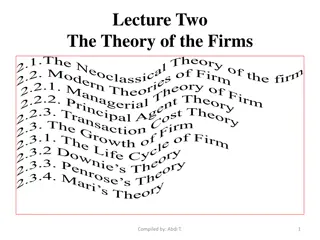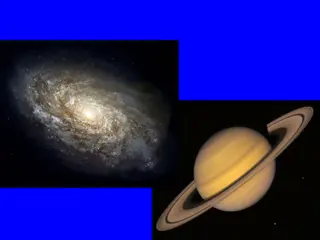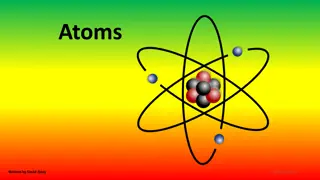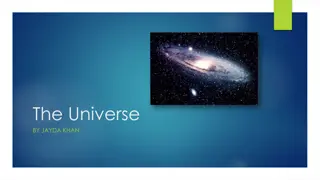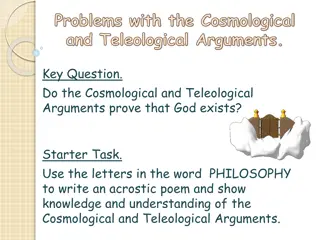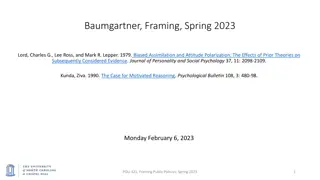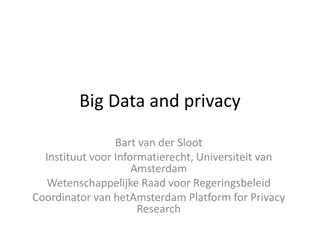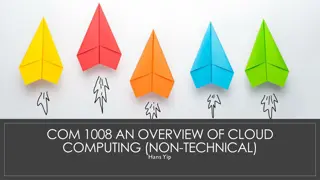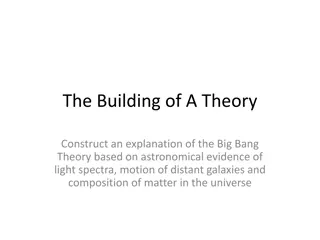The Big Bang Theory and Evidence: A Brief Overview
The Big Bang theory proposes that the universe began with a violent expansion from a single point of pure energy around 13.787 billion years ago. Evidence such as red shift, the cosmic microwave background radiation, and the formation of fundamental particles supports this theory. The universe evolved rapidly from a tiny point to matter-filled galaxies and stars over billions of years.
Download Presentation

Please find below an Image/Link to download the presentation.
The content on the website is provided AS IS for your information and personal use only. It may not be sold, licensed, or shared on other websites without obtaining consent from the author.If you encounter any issues during the download, it is possible that the publisher has removed the file from their server.
You are allowed to download the files provided on this website for personal or commercial use, subject to the condition that they are used lawfully. All files are the property of their respective owners.
The content on the website is provided AS IS for your information and personal use only. It may not be sold, licensed, or shared on other websites without obtaining consent from the author.
E N D
Presentation Transcript
Astronomy 1020 chapter 29 Clayton State University Slides for Astronomy textbook from OpenStax https://openstax.org/books/astronomy/
Evidence for Big Bang (Short version) Red shift - as light from distant galaxies approach earth there is an increase of space between earth and the galaxy, which leads to wavelengths being stretched In 1964, Arno Penzias and Robert Wilson, discovered a noise of extraterrestrial origin that came from all directions at once - radiation left over from the Big Bang (CMB cosmic microwave background) In June 1995, scientists detected primordial helium in the far reaches of the universe - consistent with an important aspect of the Big Bang theory that a mixture of hydrogen and helium was created at the beginning of the universe
10-43s - gravity separates from other forces - 10-28 centimeters 10-35to 10-32s - fundamental particles - quarks and electrons - softball 10-6s - quarks combine into protons and neutrons - solar system Universe Fast Building a 1 s - electromagnetic and weak nuclear forces separate 3 minutes - protons and neutrons combine into atomic nuclei 105years - electrons join nuclei to make atoms; light is emitted (CMB) 105-109years - matter collapses into clouds, making galaxies and stars
Time begins The universe begins ~13.787 0.020 Billion years ago The universe most likely begins as the size of a single atom. Or the size of Solar system. Much smaller than now! The universe began as a violent expansion All matter and space were created from a single point of pure energy in almost an instant
~ 3 minutes after big bang (skipping some heavy physics) The universe has grown from the size of an atom to larger than the size a grapefruit ?2= ?2?4+ ?2?2 Energy converted into matter via Special relativity relationship. Thus, energy forms matter that clumps into what we call protons, neutrons and electrons. These parts later form into atoms
About a hundred thousand years after Big Bang ATOMS form (specifically Hydrogen and its isotopes with a small amount of Helium.) The early Universe was about 75% Hydrogen and 25% Helium. It is still almost the same today.
~200 to 400 million years after Big Bang First galaxies and stars begin to form
~ 4.6 billion years ago Our Solar system forms
Misconceptions about the Big Bang We tend to image the singularity as a little fireball appearing somewhere in space There was no explosion; there was (and continues to be) an expansion Rather than imagining a balloon popping and releasing its contents, imagine a balloon expanding: an infinitesimally small balloon expanding to the size of our current universe space began inside of the singularity. Prior to the singularity, from our point of view nothing existed, not space, time, matter, or energy - nothing.
Big Bang evidence Universal expansion and Hubble s Law 2.7K temperature background radiation Quasars Radioactive decay Stellar formation and evolution Speed of light and stellar distances
1. Universal expansion and Hubble s Law Hubble observed the majority of galaxies are moving away from us and each other The farther, the faster they move Red Shift
Noise radiation (static) is evenly spread across space a) The amount of radiation matched predictions C.O.B.E satellite confirmed for the entire universe that noise radiation (static) is evenly spread b) 2. Background radiation c) Law of conservation of energy (energy can neither be created or destroyed) energy remains constant over time d)
3. Quasars - super large (solar system size) galactic cores that put out more light than whole galaxies Only found 10-13 billion light years away Found nowhere else Nothing exists past them
4. Radioactive decay Some asteroids that have been dated are found to be older than Earth Gives us an estimated time that Earth and the Solar system have formed Radiometric dating gives us the age of items from the decay of radioactive materials found within the object
5. Stellar formation and evolution We observe the life cycles of stars across the universe using tools such as satellites and telescopes we view stars form, burn and explode Some stars are older than all other due to their long life
6. Speed of light and stellar distances The speed of light is a universal constant of 300,000 km/s2 We observe stars millions/billions of light-years away The furthest stars away are 10-13 billion light years away We have telescopes that can see further, but there isn t anything viewable
Any Questions? Big Bang Chronology 18






